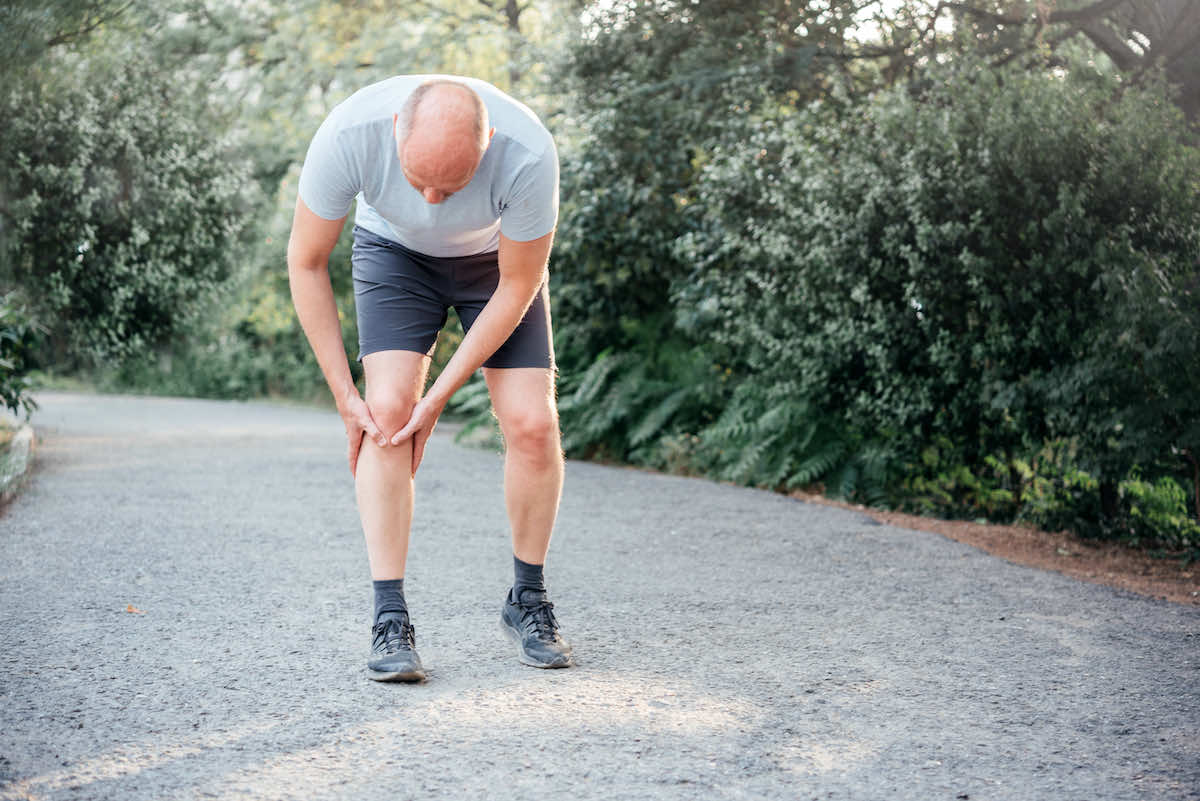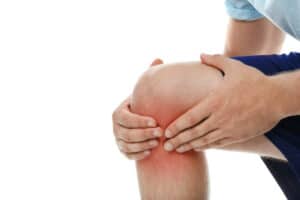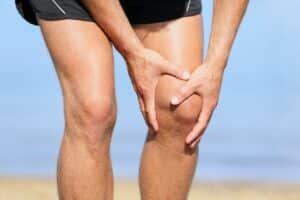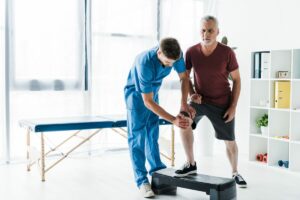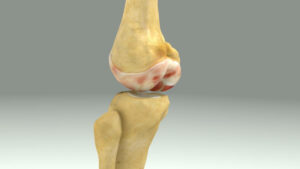Free download: Top 10 Natural & Easy Remedies for Joint Pain from Home. Learn these helpful remedies.
Estimated Reading Time: 5 minutes read
Say hello to your patellar tendon, the bridge between your kneecap (patella) and shinbone. Its job is to help your muscles extend the knee so you can kick a football, leap like a ballet dancer, or do a simple act like getting up from a chair.
Now imagine this hardworking tendon gets torn – a bit of a bummer, isn’t it? But don’t worry, whether you’ve torn your patellar tendon doing something heroic like saving a cat from a tree or something mundane like tripping over a rug, we’ve got some exercises to help you on your road to recovery.
Before we dive in, let’s set something straight. Not all patellar tendon tears are equal. Some are like a sprained toe – minor and manageable with conservative treatment. Others are more severe and might require surgery, similar to a serious ankle impingement. So, the type of tear you’ve got and the treatment you need should be discussed with your physician before you kickstart any exercise regimen.
Table of Contents
Understanding Patellar Tendon Tears
Think of the patellar tendon as a strong band that links your kneecap to your shinbone. If this band tears, it’s going to be hard for you to straighten your knee and kick properly.
When it comes to a patellar tendon tear, the pain and problems you face can change a lot. For some, there might be a bit of pain and swelling. For others, it might be so bad that they can’t straighten their knee or even walk.
These tears can happen if you hurt your knee suddenly, or they can come about slowly over time if the tendon is used too much and starts to wear out. No matter how it happens, a patellar tendon tear will disrupt the normal workings of your knee.
Initial Steps to Recovery
Before we dive into the exercises, it’s important to remember that these are meant for less severe tears and should be done with the help of a healthcare professional. If you’re experiencing major pain or severe symptoms, these exercises might not be the right fit for you.
In such a case, it would be best to speak with a doctor. There might be a need for a different treatment plan or even surgery. It’s crucial to ensure that you’re not worsening your condition while trying to recover.
Exercises for Patellar Tendon Tear Recovery
Once your physician gives you the go-ahead, here are some exercises you can incorporate into your routine. These are geared towards helping you regain strength and mobility in your knee.
1. Heel Slides with Rope
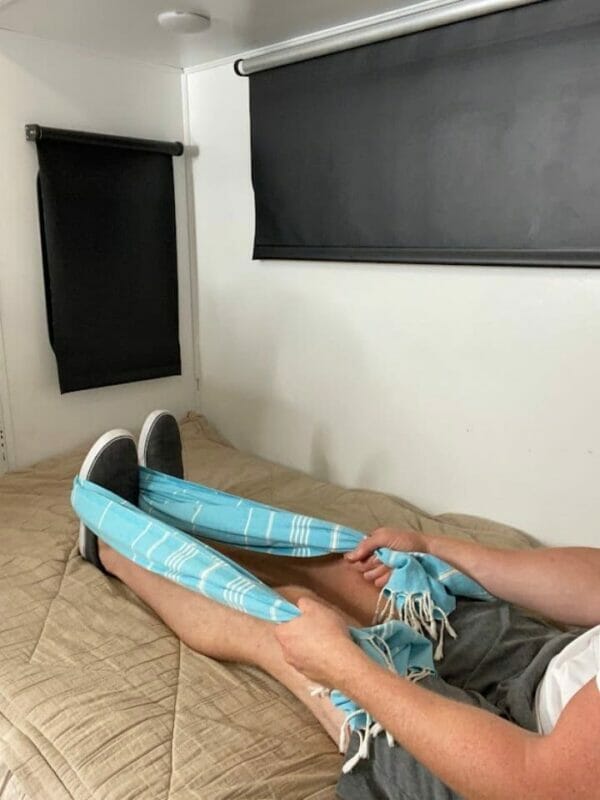
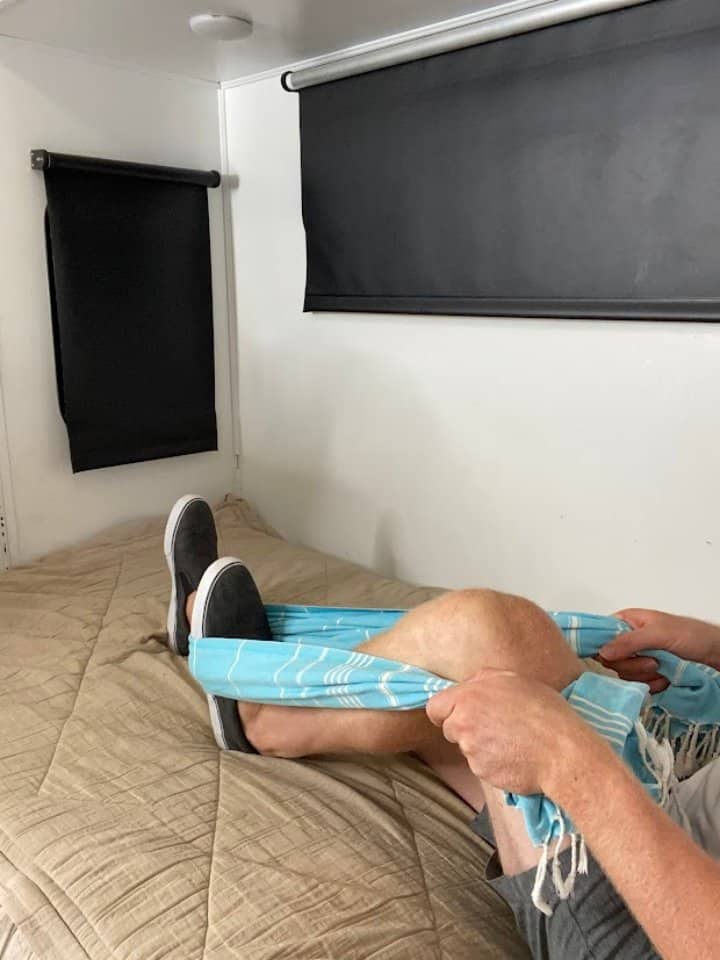
- Starting position: Sitting or laying down with the injured leg in front of you (can be on the floor, couch, or bed).
- Wrap a non-elastic strap around the foot.
- Pull on the strap with the arms to slide the heel towards the bottom while simultaneously bending the knee.
- Hold for 5 seconds, then return to your starting position.
- Repeat 10 repetitions for 3 sets.
2. Quad Sets
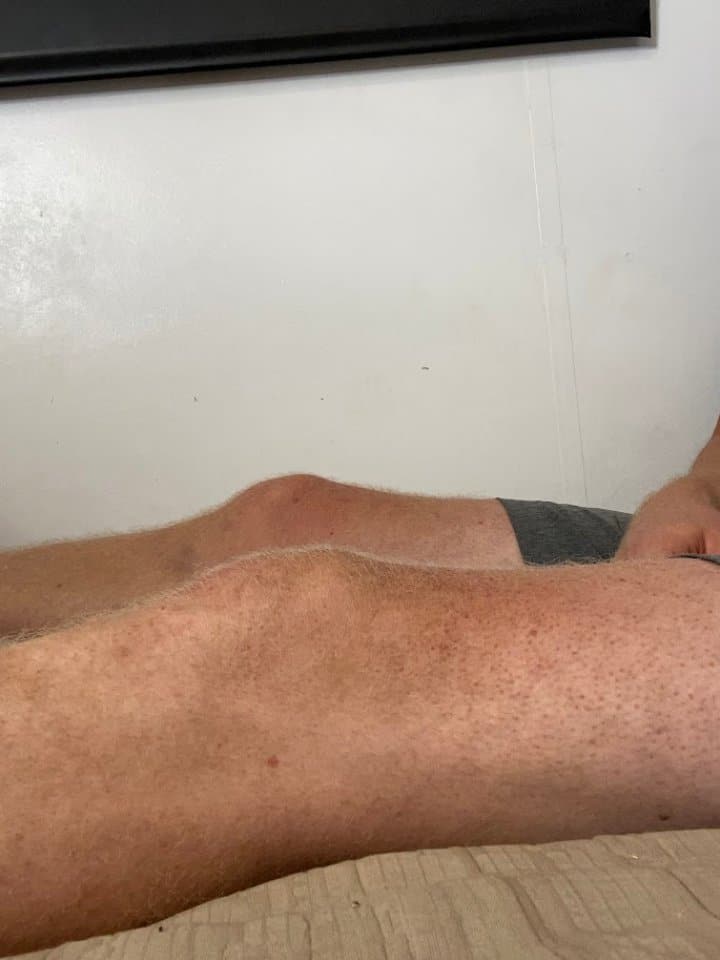
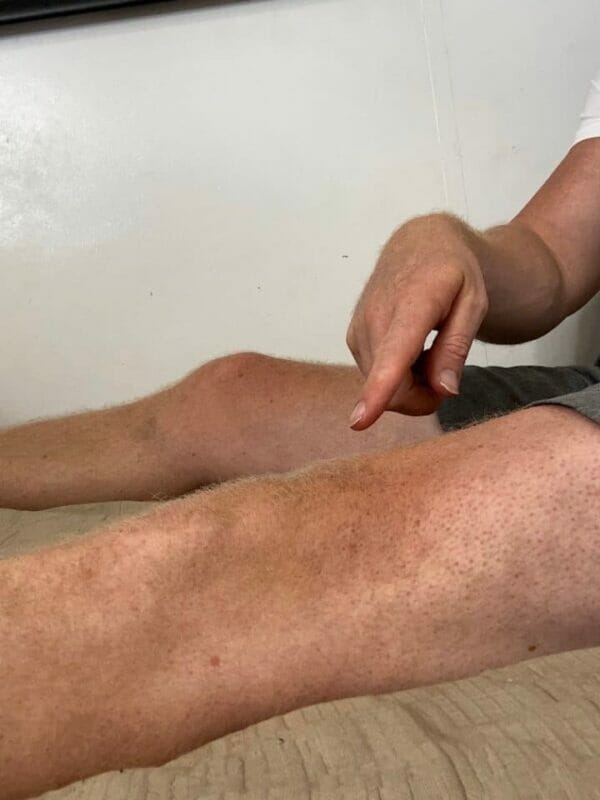
- Starting position: Seated with the injured leg stretched in front of you (can be on the floor, couch, or bed).
- Squeeze the quadriceps (the muscles on the top of the thigh) and try to press the back of the injured knee down toward the surface.
- Hold for 5 seconds, then relax.
- Repeat 10 repetitions for 3 sets.
3. Heel Prop
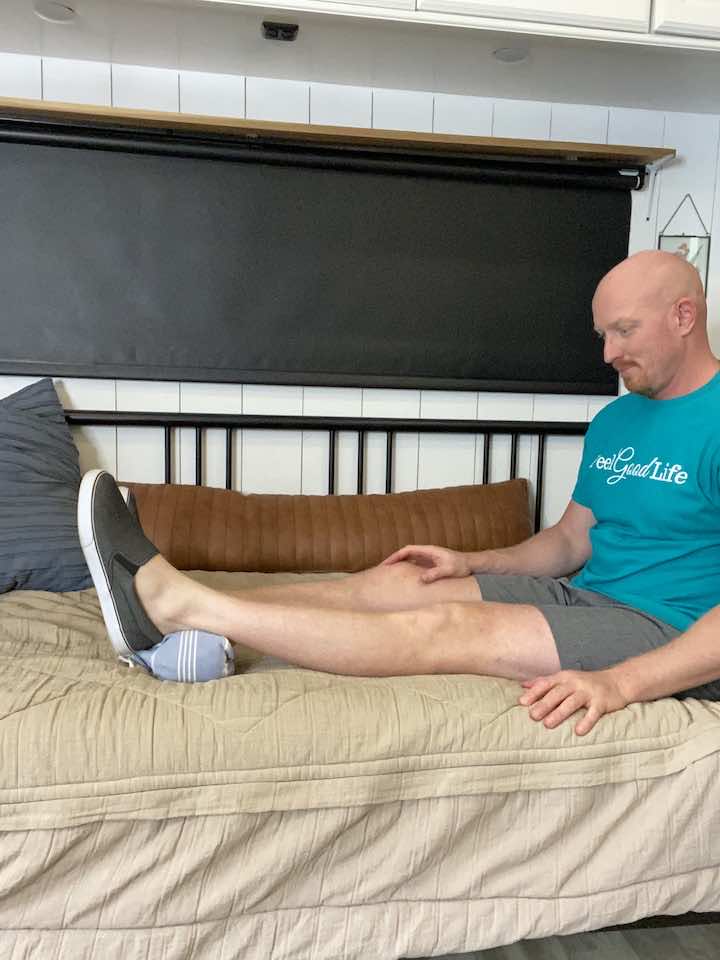
- Start by sitting on your bed with your back supported and your legs stretched out in front of you, or you can also perform this laying down on your bed or couch.
- Then, place a towel under your heel so it is propped up.
- The next step is to relax your leg in that position while your knee extends.
- Maintain this position for 30 seconds.
- Perform these steps for a total of 3 sets.
4. Seated Knee Extension
This should be performed only if it’s not too painful. Making it eccentric by slowly lowering the leg helps with healing if the pain isn’t too high.
- Sit in a chair about a foot away from a wall, with your knees at a 90-degree angle and your spine in a neutral position.
- Press your toe into the wall to tense your thigh muscle.
- Push with about 70-80% of your maximal exertion for 10 seconds.
- Release the tension and rest for a few seconds.
- Repeat this exercise for a total of 3 times per knee.
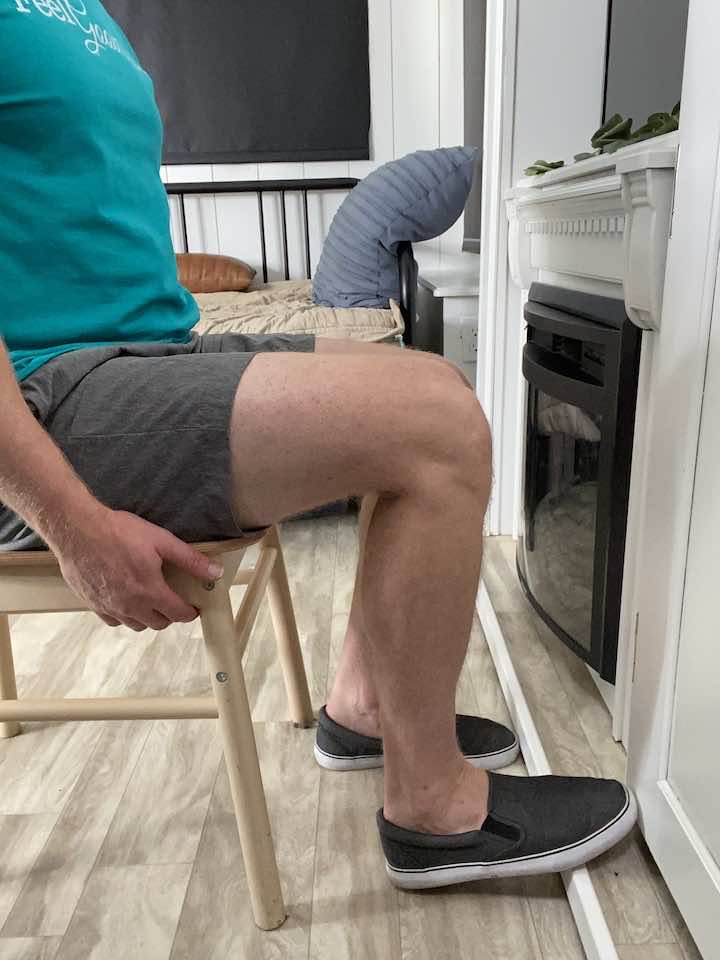
5. Standing Hip Lifts


- Stand tall with one hand placed on a bed or chair for support.
- Balance on your left leg, keeping a slight bend in your knee to avoid locking it out.
- Lead with your heel and lift your right leg out to the side, keeping your foot flexed.
- Be sure not to lean to the left while lifting your leg.
- Lower your leg back down to the starting position.
- Repeat this movement 10 times only on the injured leg.
- Do a total of 3 sets of this exercise.
6. Standing Hip Extension
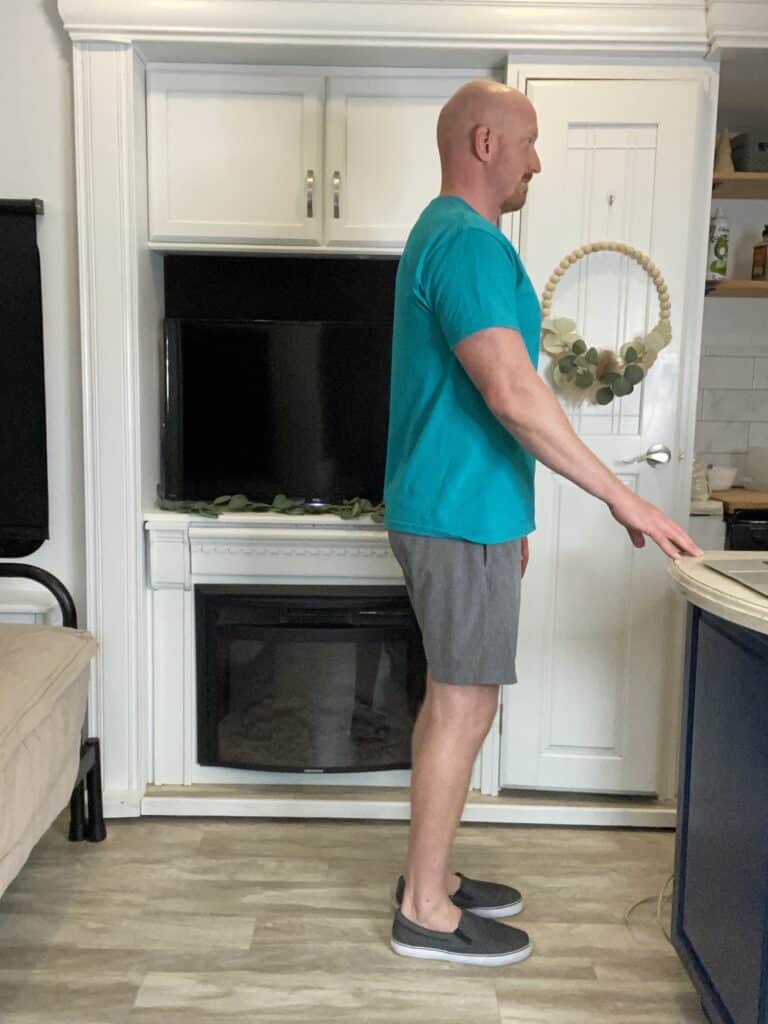
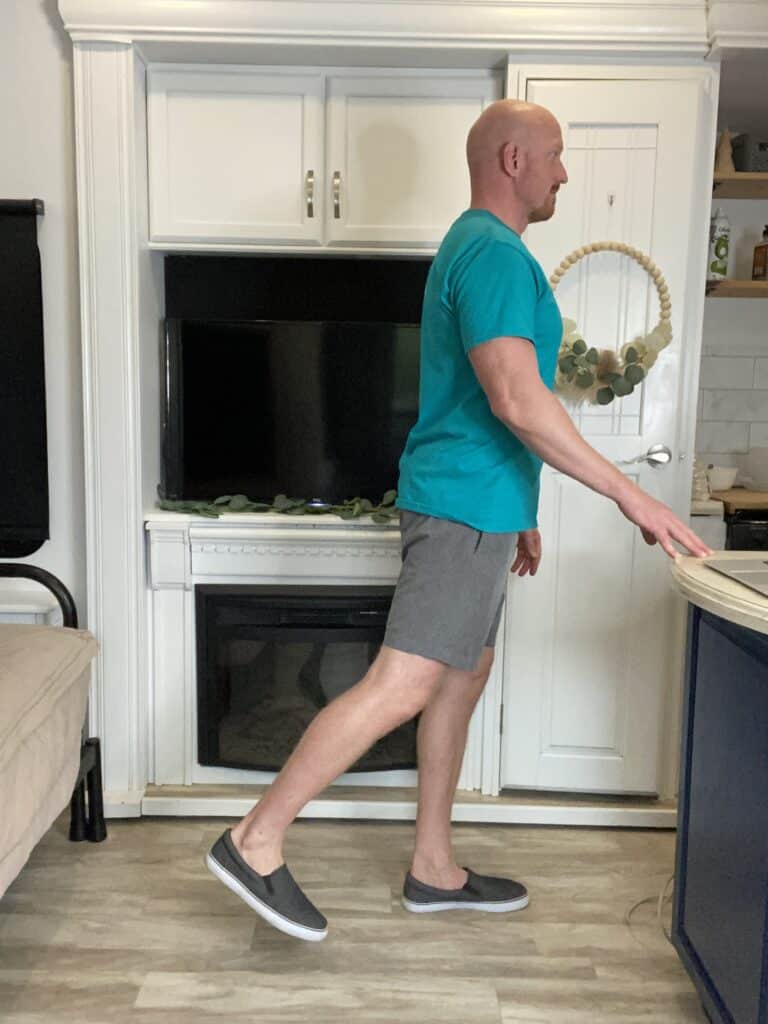
- Stand tall with your hands placed on a steady surface, such as a counter, sink, or chair (without wheels), to hold onto for balance.
- Shift your weight onto your left leg, keeping a slight bend in your left knee to avoid locking it out.
- Keeping your toes pointed forward and your right leg straight, lift your right leg back a few inches.
- Lower your leg back down to the starting position.
- Repeat this movement for 10 repetitions only on the injured leg.
- Do a total of 3 sets of this exercise.
Conclusion
Recovering from a patellar tendon tear is a gradual process – it’s more of a marathon than a sprint. It’s critical to be patient and consistent, monitoring your progress and listening to what your body is telling you. The last thing you want is to rush the process and potentially create long-term problems.
Keep in mind that every step you take towards recovery, no matter how small it may seem, is a significant achievement. With dedication and the right approach, you’ll gradually regain your strength, improve your mobility, and get back to your regular routine. Here’s to a steady and successful recovery!


